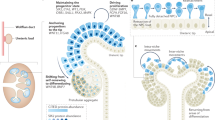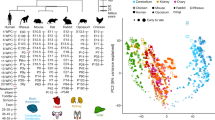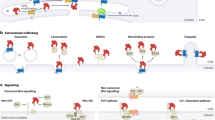Abstract
OHNO1 suggests that the molecular biology of development of mammals is simpler than usually supposed. Certainly, the Tfm genetic variant should prove fruitful in investigating the mechanism of action of testosterone. Even accepting the validity of the proposed mode of action, however, the identification of one part of this regulatory system does not answer questions which may legitimately be asked about the molecular biology of sexual differentiation. It is not claimed that it tells us anything about the mechanism which induces the gonad to differentiate as a testis secreting testosterone in male animals but not in females; but neither does it give us any information as to how particular cells in both male and female animals come to possess the molecule (the Tfm protein1) which enables them to respond to testosterone, whereas other cells do not. Again, among those cells which do produce the Tfm protein, there must be some prior regulation whereby the recognition of base sequences coding (in Ohno's example) for alcohol dehydrogenase and β-glucuronidase by the protein–testosterone complex (whether or not this involves Ohno's purely hypothetical homologous base sequences) occurs in kidney proximal tubule cells, but not in other target cells of testosterone where these enzymes are not induced. Yet these are the components of the regulatory system crucially responsible for differentiation between sexes and between tissues; whatever its mode of action may be, testosterone can only act as part of a switching mechanism in development by virtue of such components. In the context of classical embryology, Waddington has made a similar distinction between evocation and individuation2.
This is a preview of subscription content, access via your institution
Access options
Subscribe to this journal
Receive 51 print issues and online access
$199.00 per year
only $3.90 per issue
Buy this article
- Purchase on Springer Link
- Instant access to full article PDF
Prices may be subject to local taxes which are calculated during checkout
Similar content being viewed by others
References
Ohno, S., Nature, 234, 134 (1971).
Waddington, C. H., Principles of Embryology (Allen and Unwin, London, 1956).
Falconer, D. S., Latsyzewski, M., and Isaacson, J. H., Genet. Res., 5, 473 (1964).
Stewart, A. D., and Stewart, J., Amer. J. Physiol., 217, 1191 (1969).
Stern, C., Amer. Sci., 42, 213 (1954).
Spickett, S. G., Nature, 199, 870 (1963).
Mather, K., Biol. Rev., 18, 32 (1943).
Breese, E. L., and Mather, K., Heredity, 14, 375 (1960).
Thoday, J. M., Mem. Soc. Endocrinol., 15, 297 (1967).
Nature, 234, 161 (1971).
Author information
Authors and Affiliations
Rights and permissions
About this article
Cite this article
STEWART, A. Are Mammalian Regulatory Systems Simple ?. Nature 237, 36–37 (1972). https://doi.org/10.1038/237036a0
Received:
Revised:
Issue Date:
DOI: https://doi.org/10.1038/237036a0
Comments
By submitting a comment you agree to abide by our Terms and Community Guidelines. If you find something abusive or that does not comply with our terms or guidelines please flag it as inappropriate.



